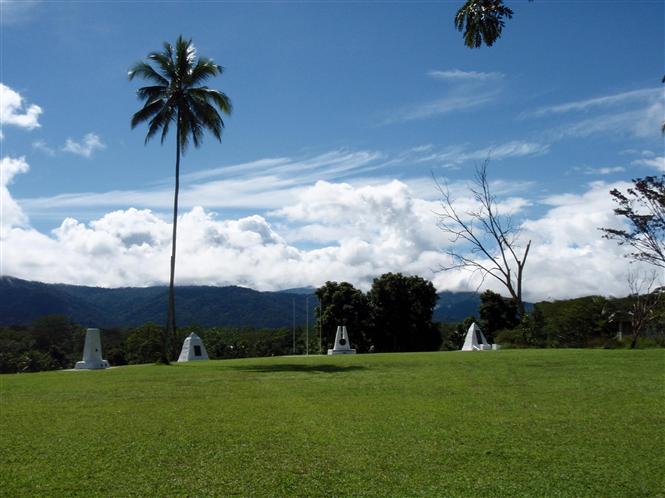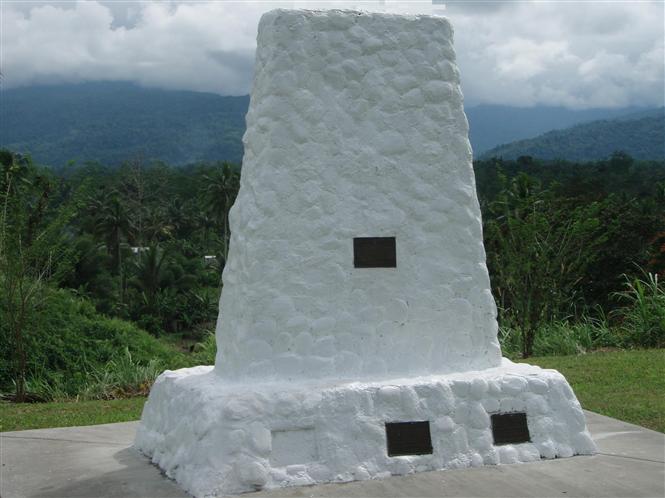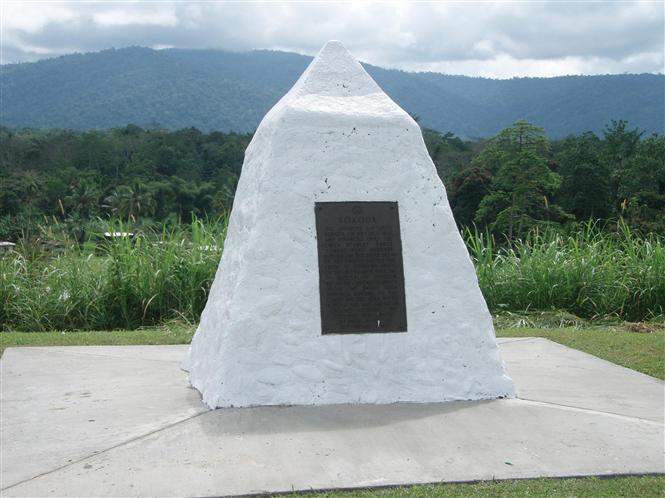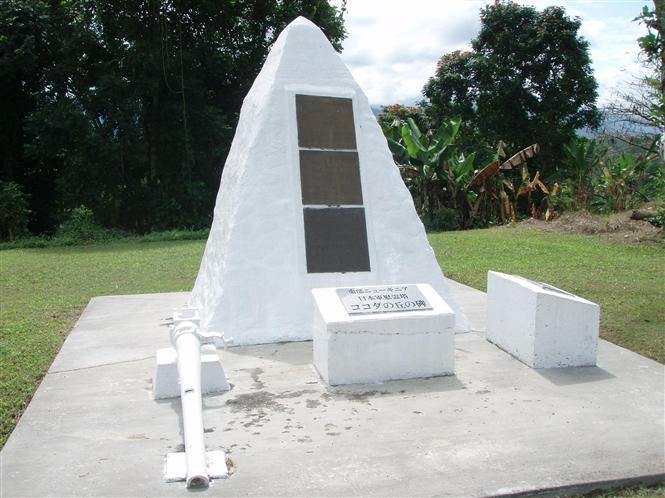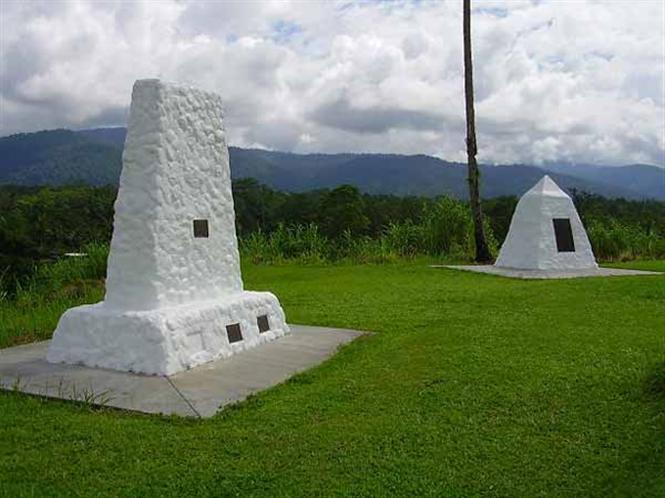The Kokoda Memorial
Description
The memorial consists of four white cairns with inscribed plaques. The first commemorates the actions of Bruce Kingsbury VC at Isurava, as well as previous veterans’ pilgrimages to Kokoda. The second cairn features an official Battle Exploit plaque, while the third is a memorial dedicated to the Papuan carriers who worked along the Kokoda Track. The fourth is a memorial dedicated to all those who served and died along the Kokoda Track – it features plaques in Tok Pisin, Japanese and English.
The village of Kokoda also contains the Herbert Kienzle Memorial Museum, maintained by the Office of Australian War Graves. Located at the edge of the memorial area, it includes information panels and images about the Kokoda Campaign. A sculpture of a local carrier assisting a wounded Australian soldier comprises the central feature of the museum. The museum is dedicated to Captain Herbert Kienzle, an officer of the Australian New Guinea Administrative Unit (ANGAU). Captain Kienzle was instrumental in marshalling the force of Papuan carriers that assisted the Australian forces during the battles along the Kokoda Track in 1942.
History
In July 1942 the Japanese, having captured Rabaul, landed troops at Buna and Gona on the north coast of Papua New Guinea (PNG) and, a month later, landed another force at Milne Bay. Their objective was to capture Port Moresby, the main Australian base in PNG. Strategically, to capture the port would give the Japanese control of a major route between the Pacific and Indian Oceans, preventing the Allies from using Australia as a base of operations and effectively cutting off the Australians from American supply ships. It would also be a base from which they could strike at most of north-eastern Australia. The barrier between the Japanese forces in the north and Port Moresby on the south coast was the Owen Stanley Range - a steep, rugged series of mountains crossed only by a few foot tracks, the most important of which was the Kokoda Track.
Forced to repel the invasion, the Australians fought the Japanese in appalling conditions over the next four months. By late July, the larger Japanese force had taken Kokoda, forcing the Australian and Papuan troops back to Isurava where they temporarily held the Japanese during an intense five-day action. Private Bruce Kingsbury, killed as he rushed forward to drive back the enemy, was awarded a posthumous Victoria Cross (VC) for his bravery in this battle, the first VC awarded during the New Guinea campaign. Despite their stubborn resistance, the Australian units continued withdrawing back along the Kokoda Track. Further stands against the Japanese were made at Eora Creek, Templeton’s Crossing, Efogi, Mission Ridge and Ioribaiwa. During those gruelling days, the Papuan men employed as carriers played a vital role in the battle, carrying supplies forward for the troops and the wounded or sick back to safety. By mid September, Australian reinforcements had come from Port Moresby, digging into a defensive position at Imita Ridge. The Japanese, exhausted and out of many of their supplies, were ordered to withdraw. During the next six weeks they fell back over the mountains pursued by troops of the 25th Brigade. Finally, on 2 November, Kokoda was retaken by the Australians and the battle for the Kokoda Track was over.
This memorial commemorates the resistance of Australian soldiers who halted the advance of the Japanese over the Owen Stanley Ranges at Ioribaiwa Ridge. That turning point began the offensive which eventually led to the defeat of the Japanese in Papua New Guinea.
Construction Information
The Herbert Kienzle Memorial Museum was designed by Grenfell, Fraser and Associates from Gosford, Australia and was built by the combined efforts of Rotary Australia and the people of Oro Province. The central display was created by the Australian War Memorial and the sculpture of the carrier and wounded soldier is the work of Peter Corlett. The museum was opened on 16 September 1995, by the Hon Sir Julius Chan, Prime Minister of Papua New Guinea and the Hon Paul Keating, Prime Minister of Australia.
Location
Kokoda, Papua New Guinea.
The memorial is located at the edge of the parade ground associated with the Government Building in Kokoda.
